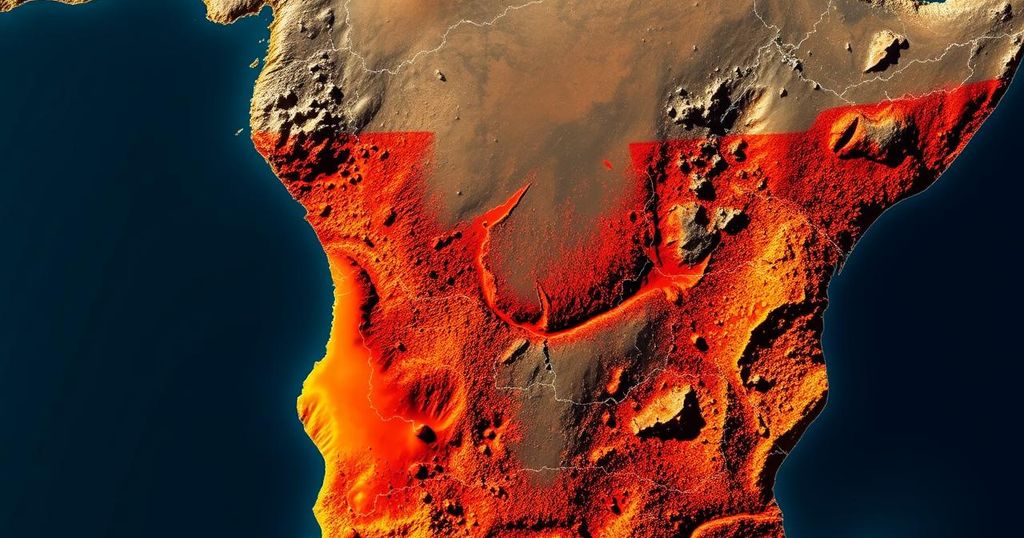Severe Drought in Southern Africa Threatens Millions with Hunger and Malnutrition

Southern Africa is currently experiencing the worst drought in a century, leading to a humanitarian crisis affecting over 27 million individuals, including 21 million malnourished children. Countries such as Lesotho, Malawi, Namibia, Zambia, and Zimbabwe have declared states of national disaster as crops fail and livestock perish. The situation is expected to worsen until the next harvest, exacerbated by climate change and the El Niño phenomenon. Authorities are resorting to drastic measures, including wildlife culling, to address food shortages.
An unprecedented drought, described by the United Nations as the most severe in a century, is wreaking havoc across Southern Africa, placing over 27 million lives at risk and leaving 21 million children suffering from malnutrition. The World Food Programme (WFP) has indicated that the ongoing crisis has led to states of national disaster being declared in nations such as Lesotho, Malawi, Namibia, Zambia, and Zimbabwe. The circumstances have deteriorated significantly, as the drought has obliterated agricultural outputs, jeopardizing food security in the region. Amidst the calamity, Angola and Mozambique are also feeling the effects of this ecological disaster. The WFP predicts that the situation is poised to worsen until the next harvest cycle that is anticipated in March or April of the following year. WFP spokesperson Tomson Phiri articulated, “A historic drought – the worst food crisis yet – has devastated more than 27 million lives across the region. Some 21 million children are malnourished.” As October ushers in the lean season, the expectation is that each subsequent month will bring increasing challenges until the forthcoming harvests. Reports indicate that crops have failed, livestock has died, and children are fortunate if they receive a singular meal each day. The drought has adversely affected tens of millions who depend on small-scale, rain-fed agriculture for sustenance and income. The phenomenon of El Niño coupled with climate change has been attributed to the below-average rainfall, which has significantly intensified the ongoing food crisis. A UN representative previously noted that this drought is the most severe the region has faced in a century, decimating 70 percent of Zambian harvests and 80 percent of those in Zimbabwe. The rainfall deficit has also severely reduced hydropower generation, leading to widespread electricity shortages. In response to dwindling resources, authorities in Namibia and Zimbabwe have started culling wildlife, including elephants, to supplement food supplies for their starving populations. As long as sub-Saharan Africa remains heavily reliant on rain-fed agriculture, experts warn it will remain vulnerable to the dire impacts of climate change. Consequently, millions of livelihoods depend upon vulnerable climate conditions, whilst economically disadvantaged states grapple with financing necessary climate-resilient adaptations.
The ongoing drought in Southern Africa represents a severe climatic and humanitarian challenge, primarily fueled by the consequences of climate change and extreme weather phenomena such as El Niño. Such factors have led to critical drops in rainfall, severely impacting agriculture, which is the backbone of many nations in the region. The reliance on rain-fed agricultural practices has rendered these populations particularly susceptible to drought conditions, resulting in significant food insecurity and malnutrition, particularly among children. This crisis has been exacerbated by rising global temperatures and changing weather patterns, which threaten agricultural productivity and food stability in a region already facing socio-economic challenges.
The drought plaguing Southern Africa is deemed the worst in a century, affecting over 27 million individuals and imposing an urgent humanitarian crisis. With the threat of increasing food scarcity and child malnutrition, the situation demands immediate international attention and intervention. Countries in the region face a dual crisis of agricultural collapse and electricity shortages, substantially affecting their populations’ livelihoods. Given the continued vulnerability of the region to climatic disruptions, it is imperative to bolster climate-resilient strategies and support for the affected communities to mitigate the impacts of future climatic events.
Original Source: www.aljazeera.com






